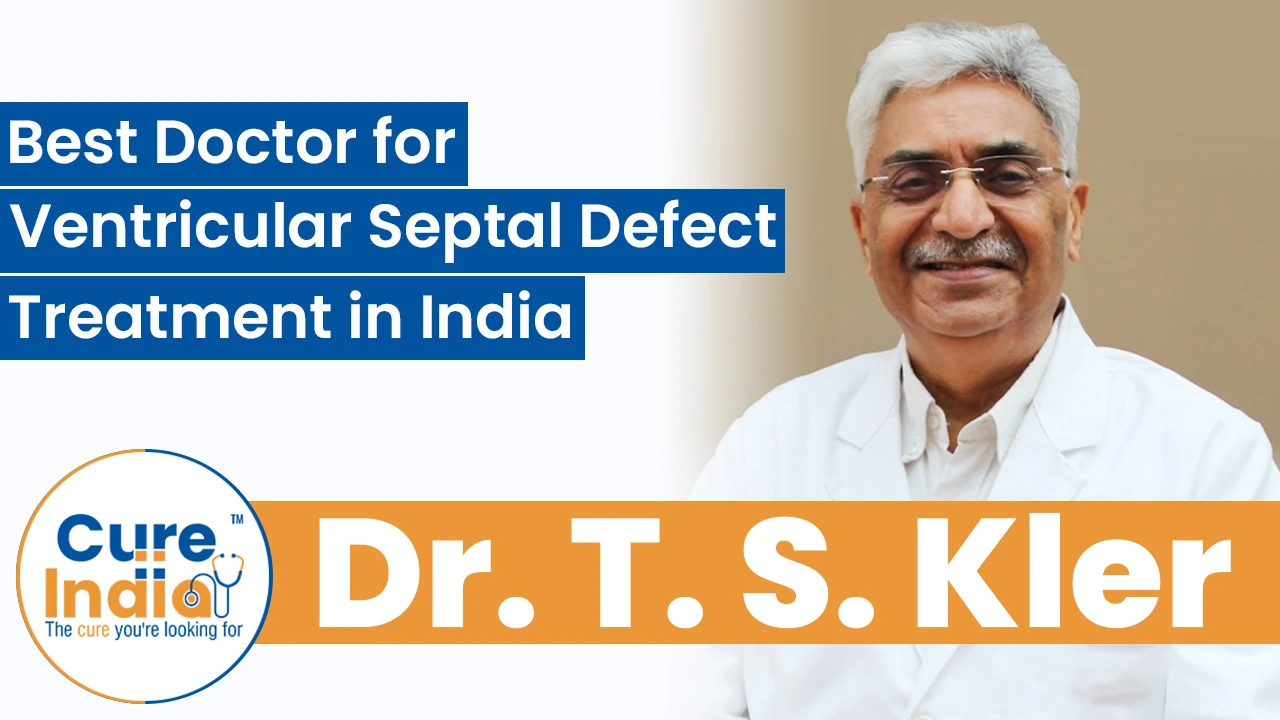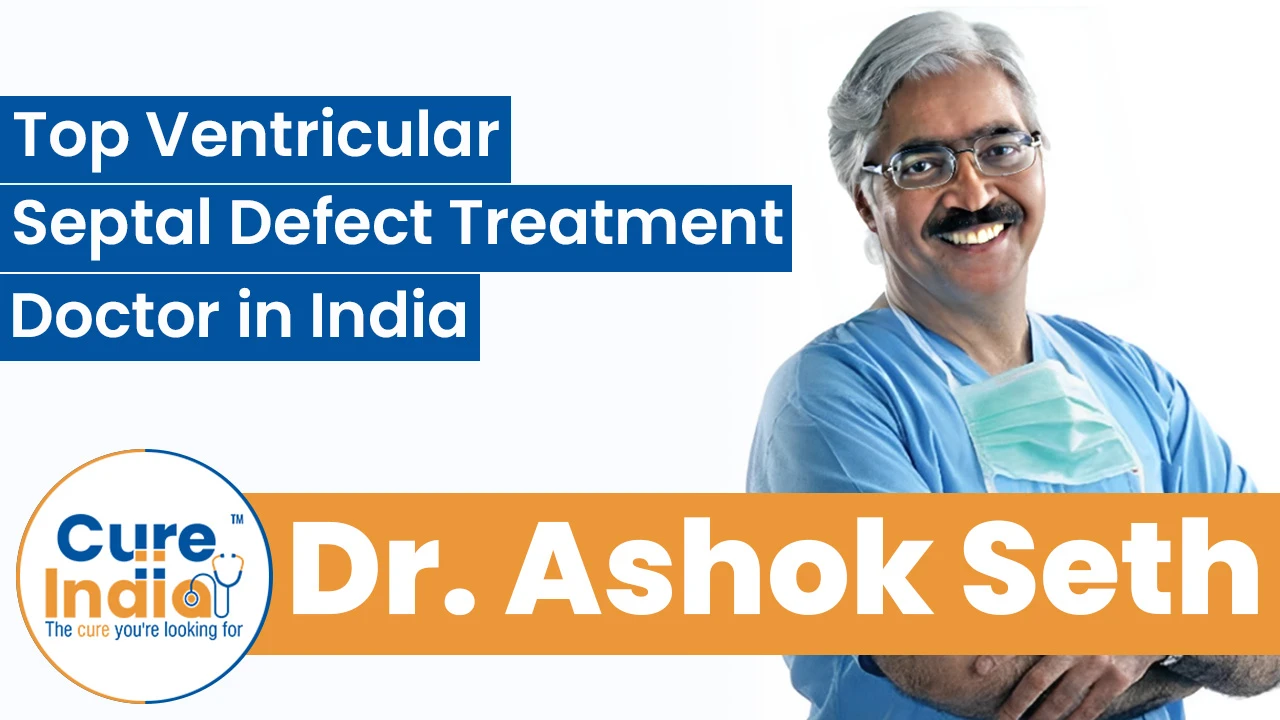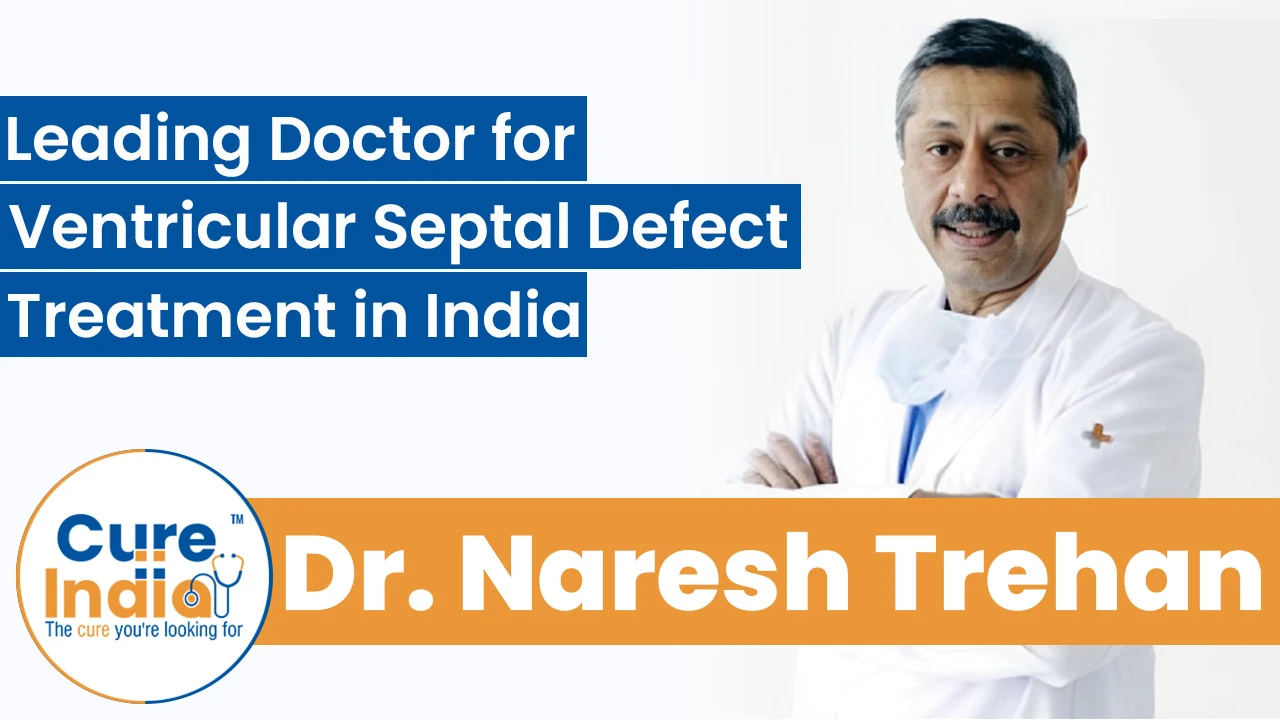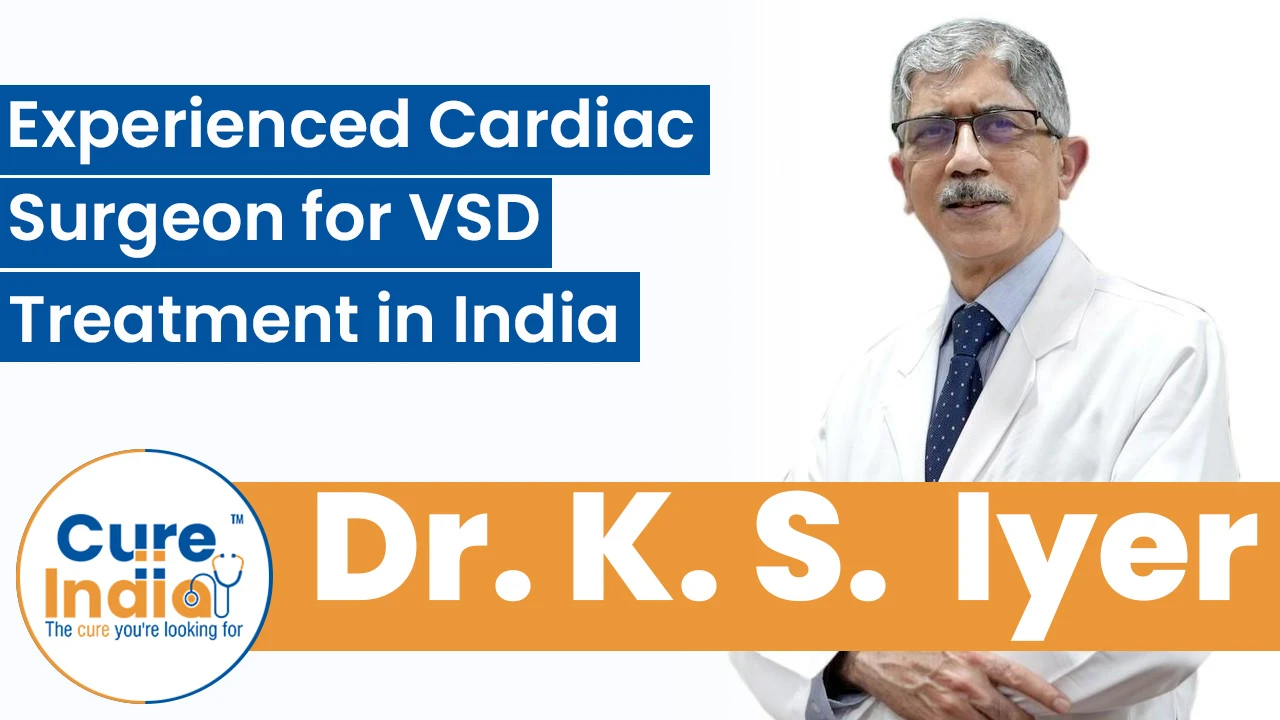

Access to advanced healthcare varies across African countries, with some regions facing challenges in receiving treatment for severe conditions like congenital ventricular septal defect (VSD) because of limited resources and medical infrastructure. Most patients choose to opt for medical tourism to get effective yet affordable treatment. Countries such as Thailand, Singapore, and India offer a wide range of such procedures.
India stands out as one of the best choices for value-driven medical care. The price for ventricular septal defect surgery in India is significantly lower compared to other canvassing nations, while advanced treatment ranges are also provided. The country has most of its tourists and patients seeking ventricular septal defect treatment due to advanced Indian cardiac surgery centres with modern technology and highly skilled cardiovascular surgeons.
In medicine, a ventricular septal defect is a hole in the wall separating the two lower chambers of the heart (the ventricles). This defect causes the oxygenated blood to enter the ventricles and become infected with deoxygenated blood, which puts a strain on the muscles of the heart, leading to issues at a later phase of life. When a baby is born with this condition, it is called a congenital ventricular septal defect.

This defect is corrected through VSD surgery. If left untreated, it can result in disability due to heart failure, pulmonary infections, or hypertension. A ventricular septal defect in infants is essential, as it restores the flow of blood from the heart in its regular pattern. It helps to improve the quality of life of the patient. It is crucial for babies and adults with severe symptoms or complications due to this defect.
The ventricular septal defect symptoms may vary according to the size of the defect and the age of the individual. Some people with minor defects may not show symptoms, while the signs may be more evident in infants and children. Here are the most common symptoms:
Ventricular septal defect in adults may make breathing difficult, especially during physical activities or even when they are resting.
People with ventricular septal defect usually get exhausted fast during physical activities. On the other hand, infants might feel tired while being breastfed, leading to long feeding times and interruptions.
Ventricular septal defect in infants makes it harder to put on enough weight despite being fed well. They may fail to grow properly because their hearts are overworked, which in turn results in poor growth.
When doctors listen to the heart, they may hear strange sounds called murmurs, which are not expected. These sounds are produced when blood flows through the hole in the septum.
Recurrent respiratory infections such as pneumonia are common among ventricular septal defect in infants because the lungs are overwhelmed by increased blood flow.
Due to the heart's reduced ability to perform its role effectively, fluid retention may lead to swelling, particularly in the lower limbs and abdomen.
Cases of severe VSDs may show blueish skin, which is a sign of less oxygen in the blood, especially in cases of large defects.
The size, location, and impact of a ventricular septal defect vary. Understanding the types of ventricular septal defects helps in determining the appropriate treatment plan. Here are the types of ventricular septal defect:
A ventricular septal defect that occurs at the ventricular septum and large heart vessel junctions is called a conoventricular defect. This defect often exists near the aortic and pulmonary valves and can be corrected by surgery if it is moderate or large.
Perimembranous ventricular septal defect is the most popular VSD type located just above the atrioventricular valves near the apex. The method of treatment varies from observation based on size to operative closure.
The inlet ventricular septal defect is positioned next to the tricuspid and mitral valves at the heart's AV canal. This condition is typically seen in persons with genetic abnormalities such as Down syndrome.
The ventricular septal defect with muscular involvement is another name for the ventricular septal defect, which is located in the muscular base of the heart. Occasionally, small muscular VSDs can spontaneously close without surgical intervention.
A surgical ventricular septal defect treatment is typically recommended for individuals with significant symptoms or complications. Here are those who may need it:

Ventricular septal defect diagnosis methods include a combination of clinical, physical, and medical tests.
A medical practitioner will question a patient about their history of illness and enquire whether they have been plagued by symptoms such as tiredness or shortness of breath.
During an examination, a doctor may auscultate the heart to detect abnormal sounds (murmurs) indicative of turbulent blood circulation.

The ventricular septal defect surgery has a high success rate when performed by an experienced cardiologist at a reputed clinic. CureIndia helps you choose the best surgeon for your VSD surgery procedure in India. CureIndia's associated surgeons have years of experience and specialisation in their fields, making them the best option for VSD surgery. Let's hear from the top VSD surgeons in India.




The ventricular septal defect treatment depends on the size and type of the defect. Some small VSDs may close on their own, while others require surgical intervention.
Cardiac catheterisation is used in milder situations to occlude this defect. A slim tube (catheter) is put through a vein and directed into the heart to introduce a closure device that closes off the hole. It is an invasive procedure. It allows quicker recovery and has other benefits over open-heart surgery.
If catheterisation cannot be done due to large defects, heart surgery is inevitable. In the operating room, a surgeon cuts the chest wall. Then he sews it up. This option is for patients with severe VSDs that harm heart function.
The ventricular septal defect treatment in India is the most-effective solution to congenital ventricular septal defect. The VSD surgery cost is different for every patient depending on the surgery technique that is being used. The VSD surgery cost in India is:
| Treatment | Cost in India | Stay in India |
|---|---|---|
| Ventricular Septal Defect Surgery in India | $5,500 - $7,000 | 10-15 Days |
| Rastelli Ventricular Septal Defect Treatment in India | $7,000 | 10-12 Days |
After a VSD closure surgery, recovery is an essential phase. Here's what patients can expect:
India has emerged as the top destination for medical tourism, with a focus on intricate heart surgeries such as ventricular septal defect treatments. Below are some of the key advantages:

■ Affordability: VSD surgery is much cheaper in India than in the United States, the UK, or Singapore. The patient can save up to 60-80% on health expenditures while obtaining good services.
■ Expertise: In this country, some doctors specialise in congenital heart defects; hence, they are amongst the top in the world. There is equal expertise to that of other countries globally.
■ Advanced Technology: Indian hospitals have the most up-to-date tools used in this field to ensure an accurate diagnosis is made. It will also facilitate a quicker recovery process with more effective treatments that will come into place afterwards.
■ Comprehensive Care: Many hospitals in India offer comprehensive before- and after-surgery benefits, comprising housing facilities, outpatient services, and recovery schedules planned on a patient basis.
■ Minimal Wait Times: Unlike several Western countries, India has shorter wait times for surgeries. While the waitlist may be several months in the West, India quickly completes diagnostic procedures.
India is a highly considered country for advanced but cheap healthcare services, which means that it is the best choice for many people who need to have ventricular septal defect treatment. Unlike any other country in the world, India offers high-quality treatment services done at the top Indian hospital for VSD treatment at relatively cheaper prices.
